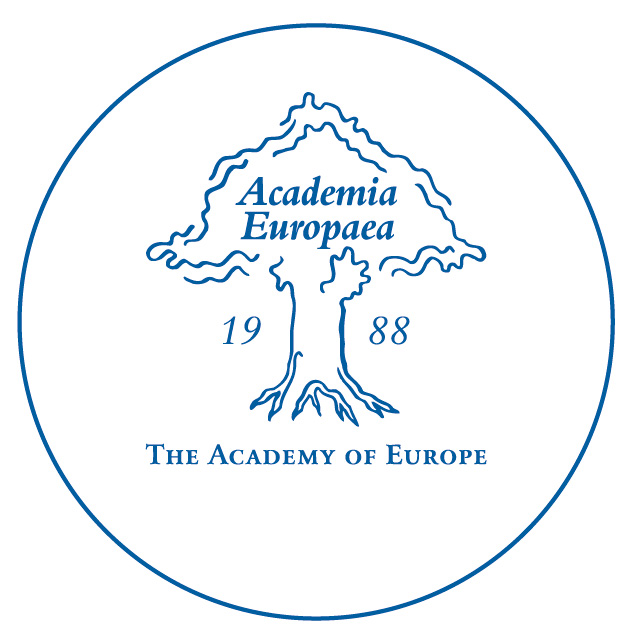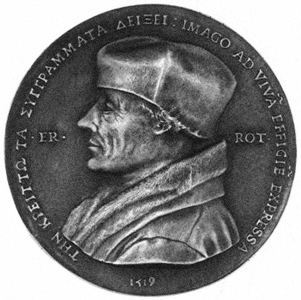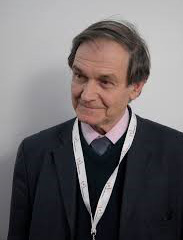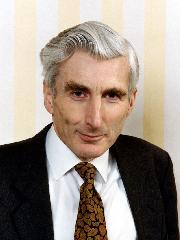Academia Europaea
The Academy of Europe#
Presentation of the Academia Europaea Erasmus Medal#
The COVID delayed event will take place on Thursday 21st October, 2021
The Academia Europaea are pleased to award an Erasmus Medal to the internationally renowned Mathematician and Physicist, and Professor (emeritus) of Mathematics, Oxford University
Professor Roger Penrose MAE#
The medal is awarded on the recommendation of in independent search committee, to a member, who has maintained over a sustained period, the highest level of international scholarship and recognition by peers.
Professor Penrose will also give the 2021 (virtual) Heinz-Nixdorf Erasmus Lecture:
TO BE CONFIRMED
Sponsored by
The laudation will be given by Professor Martin Rees MAE, University of Cambridge, UK.
AFFILIATION: Professor (emeritus) of Mathematics at the University of Oxford, UK.
LINK TO WEBPAGE: https://penroseinstitute.com/about/roger-penrose
TITLE OF PRESENTATION: TBC
ABSTRACT OF PRESENTATION: TBC
Citation:
Roger Penrose has conducted outstanding research in pure mathematics and theoretical physics for more than 60 years. He is most widely acclaimed for his work on singularities, such as black holes, which he proved can arise from the gravitational collapse of massive, dying stars. He has also made important contributions that explore possible connections between physics and consciousness, and set these out in best-selling books such as The Emperor's New Mind (1989).
(1989).
Roger Penrose revolutionised the mathematical tools that we use to analyse the properties of spacetime. Previously, work on the curved geometry of general relativity had been confined to configurations with sufficiently high symmetry for Einstein's equations to be soluble explicitly, and by investigating small perturbations away from their symmetry. His more radical approach instead concentrated just on the topology of the space, or at most its conformal structure, since it is the latter — as determined by the lay of the lightcones — that determines the trajectories of lightlike geodesics, and hence their causal relationships. The importance of Penrose's epoch-making paper "Gravitational collapse and space-time singularities" was not only its result (roughly that if an object such as a dying star implodes beyond a certain point, then nothing can prevent the gravitational field getting so strong as to form some kind of singularity). It also showed a way to obtain similarly general conclusions in other contexts, notably that of the cosmological Big Bang, which he dealt with in collaboration with Stephen Hawking.
Roger invented twistor theory , a key tool in quantum theory. He proposed the cosmic censorship hypothesis — an idea of how the effects of the unpredictability of singularities are ‘hidden’ from us. Even his recreations have been creative: his discovery of a non-periodic form of tiling — Penrose tiling
, a key tool in quantum theory. He proposed the cosmic censorship hypothesis — an idea of how the effects of the unpredictability of singularities are ‘hidden’ from us. Even his recreations have been creative: his discovery of a non-periodic form of tiling — Penrose tiling — has since been observed experimentally in quasicrystals.
— has since been observed experimentally in quasicrystals.
He has (with the possible exception of Hawking, for whom he was a mentor and collaborator) done more than anyone since Einstein, to deepen our understanding of space, time, and gravity. Moreover, alongside these ‘core’ efforts he has, throughout his long career, displayed exceptionally wide-ranging originality and intellectual energy; through his books and lectures he has been an immense cultural stimulus. He has already received many honours, but his wide-ranging and sustained career has the kind of breadth and impact renders him an especially distinguished recipient of the Erasmus Medal.
Other Bios:
https://biography.yourdictionary.com/roger-penrose
https://en.wikipedia.org/wiki/Roger_Penrose
Laudator #
TITLE AND FULL NAME: Professor, The Lord Rees of Ludlow (Martin Rees MAE)AFFILIATION: Centre for the Study Of Existential Risk, University of Cambridge, UK
LINK TO WEBPAGE: https://www.cser.ac.uk/team/martin-rees

BIOGRAPHICAL NOTE
Martin Rees is a leading astrophysicist as well as a senior figure in UK science. He has conducted influential theoretical work on subjects as diverse as black hole formation and extragalactic radio sources, and provided key evidence to contradict the Steady State theory of the evolution of the Universe.
Martin was also one of the first to predict the uneven distribution of matter in the Universe, and proposed observational tests to determine the clustering of stars and galaxies. Much of his most valuable research has focused on the end of the so-called cosmic dark ages — a period shortly after the Big Bang when the Universe was as yet without light sources.
As Astronomer Royal and a Past President of the Royal Society, Martin is a prominent scientific spokesperson and the author of seven books of popular science. After receiving a knighthood in 1992 for his services to science, he was elevated to the title of Baron Rees of Ludlow in 2005.
Other Bios:
https://en.wikipedia.org/wiki/Martin_Rees
https://royalsociety.org/people/martin-rees-12156
1. Heinz Nixdorf Stiftung is - together with Stiftung Westfalen - one of the two non profit foundations, which have been established from the assets of the estate of the entrepreneur Heinz Nixdorf, who died in 1986. The foundation promotes the following purposes:
a) the (advanced) professional education, especially in the field of modern technology
b) the sciences in respect of research and teaching, especially in the field of information technology,
c) the liberal and democratic governmental system, especially the "Soziale Marktwirtschaft"
d) public health,
e) sports.
The foundation realizes its purposes primarily in cooperation with other non profit institutions.
Heinz Nixdorf Stiftung promotes among others the Heinz Nixdorf MuseumsForum in Paderborn. This is a non profit istitution combining in a unique way the classic historic dimension of a museum with the current and future-oriented topics of a forum.
Heinz Nixdorf MuseumsForum is the largest computer museum of the world.





